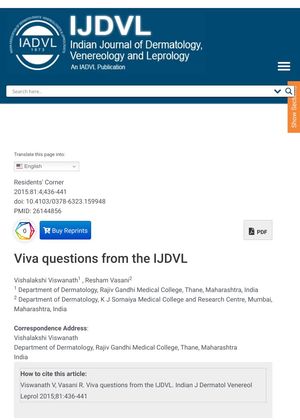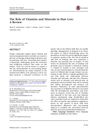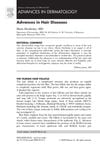Viva Questions from the Indian Journal of Dermatology, Venereology, and Leprology
January 2015
in “
Indian Journal of Dermatology, Venereology and Leprology
”

TLDR The document concludes that various skin conditions have specific characteristics and treatments, and highlights the importance of vitamin D in managing these dermatological issues.
The document discusses various dermatological conditions, their characteristics, and treatment options. It explains that an id reaction is a secondary immunologic reaction to circulating antibodies or activated T lymphocytes. Dermatophytids, a type of id reaction, are characterized by a host harboring the focus of infection elsewhere, positive skin test response to certain fungi, and lesions that resolve spontaneously after the infection is identified and eliminated. The document also discusses Miescher's cheilitis, a form of granulomatous cheilitis, and its treatment options. It outlines the role of topical vitamin D analogs in treating psoriasis and their mechanism of action. The document also discusses the role of vitamin D in various dermatological disorders, including psoriasis, lichen sclerosus et atrophicus, morphea, atopic dermatitis, vitiligo, ichthyosis, keloids, autoimmune diseases, skin cancer, tuberculosis, acne vulgaris, rosacea, ageing, seborrheic keratosis, telogen effluvium, female pattern hair loss, leg ulcers, xerosis, Behcet's disease, autoimmune bullous disorders, and polycystic ovarian syndrome with acne and hirsutism. It also covers pityriasis rubra pilaris, porokeratosis, onychomycosis, and bacillary angiomatosis, providing details on their classification, histological findings, and treatment modalities.




